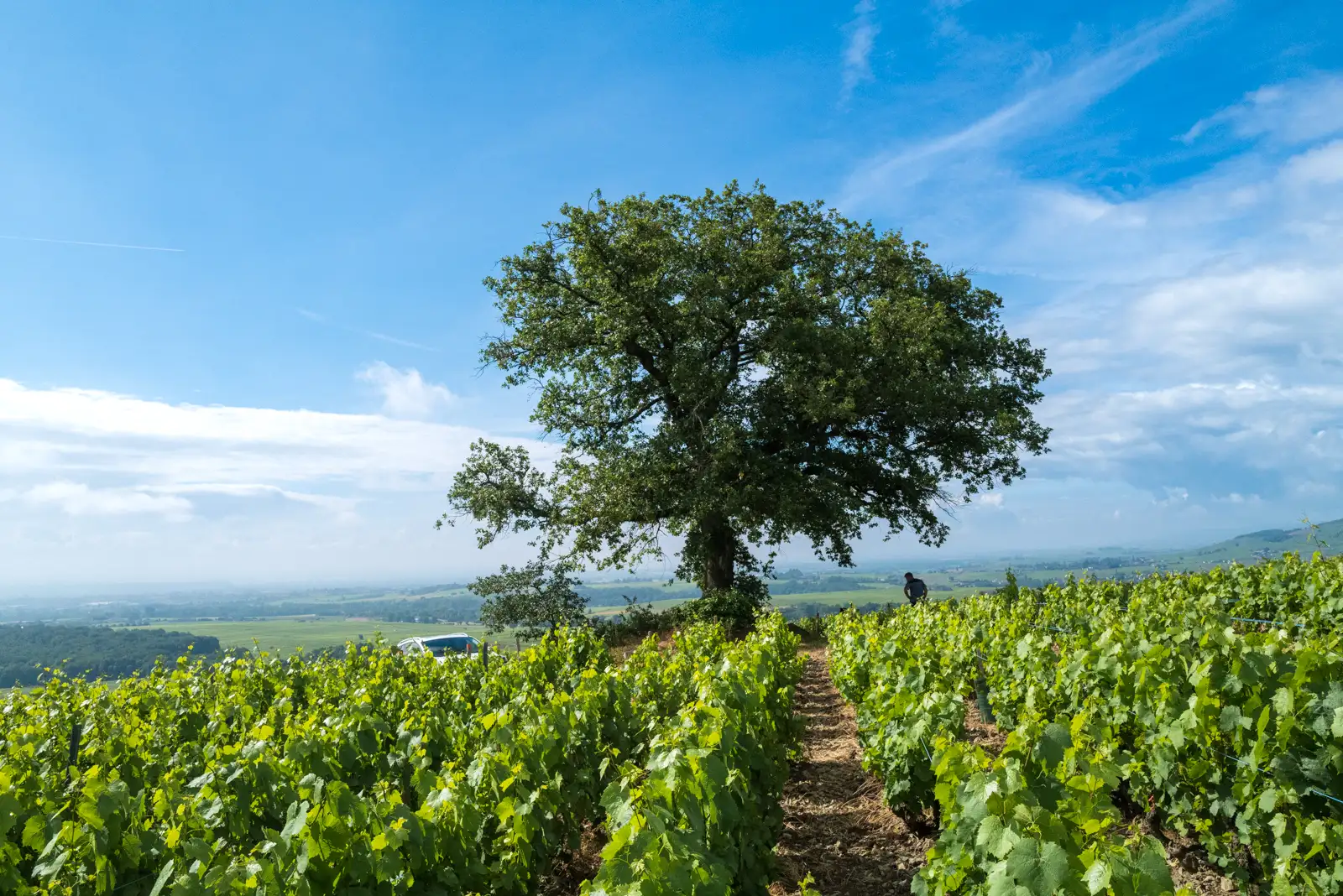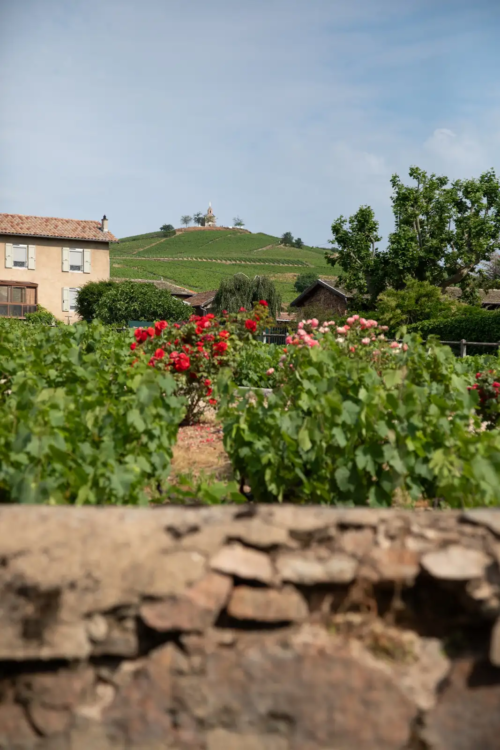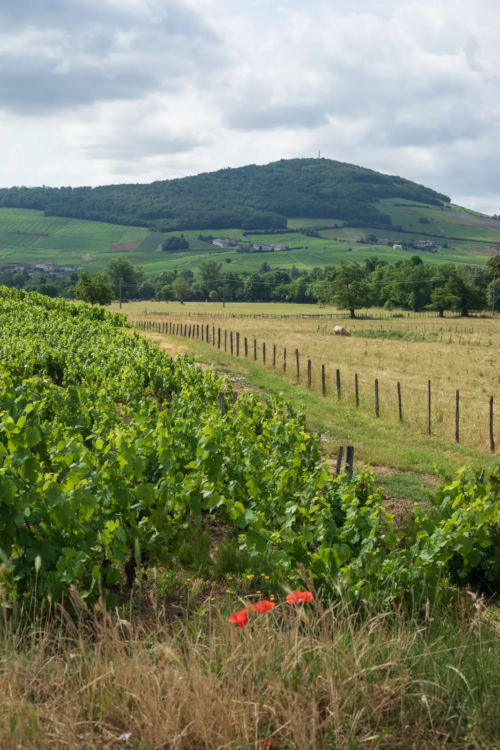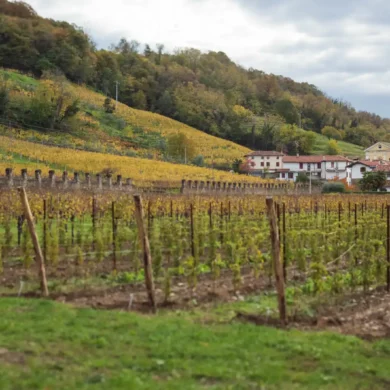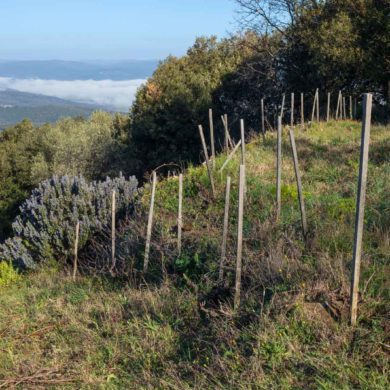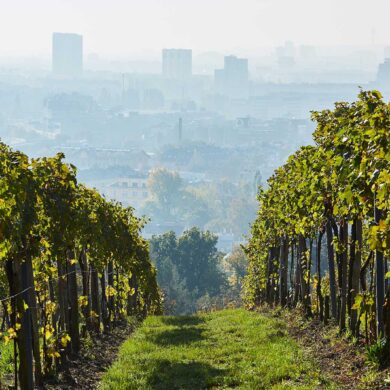There is an unusual duality to a glass of Côte du Py, and with a simple whiff you’ll notice it: fruity yet savory, floral yet fierce, serious yet playful. Even semi-carbonic maceration — that unusual Beaujolais winemaking process that often smothers the orchestra of Gamay with pop music — can’t distort the brooding soul of this singular hill. So clear are these hallmarks, that not only has the Côte du Py long been seen as Morgon’s grandest vineyard, but it has come to define what we think Morgon is.
The Côte du Py is an isolated, hulking bulge. It looks like a cartoonish bump-on-the-noggin, a swollen expanse that’s been pushed straight up from below.
However, should you get the chance to visit Beaujolais and Villé-Morgon and see the grand hill itself, you’ll likely be left with a more nuanced impression. Even to a set of eyes untrained in geological matters, the in situ experience of the Côte du Py underscores its oddball status. All around, the hills of the 10 Beaujolais Cru nakedly show the tectonic forces that created them — plates pushing, compressing and vaulting the land skyward, only for erosion to polish them into sumptuous shapes. However, the Côte du Py, is an isolated, hulking bulge. It looks like a cartoonish bump-on-the-noggin, a swollen expanse that’s been pushed straight up from below.
And that’s because it was.
“A lot of people say that the Côte du Py is a very old volcano,” winemaker Jean-Marc Burgaud told me when we arrived at its plateau-like top. “But it is not.”
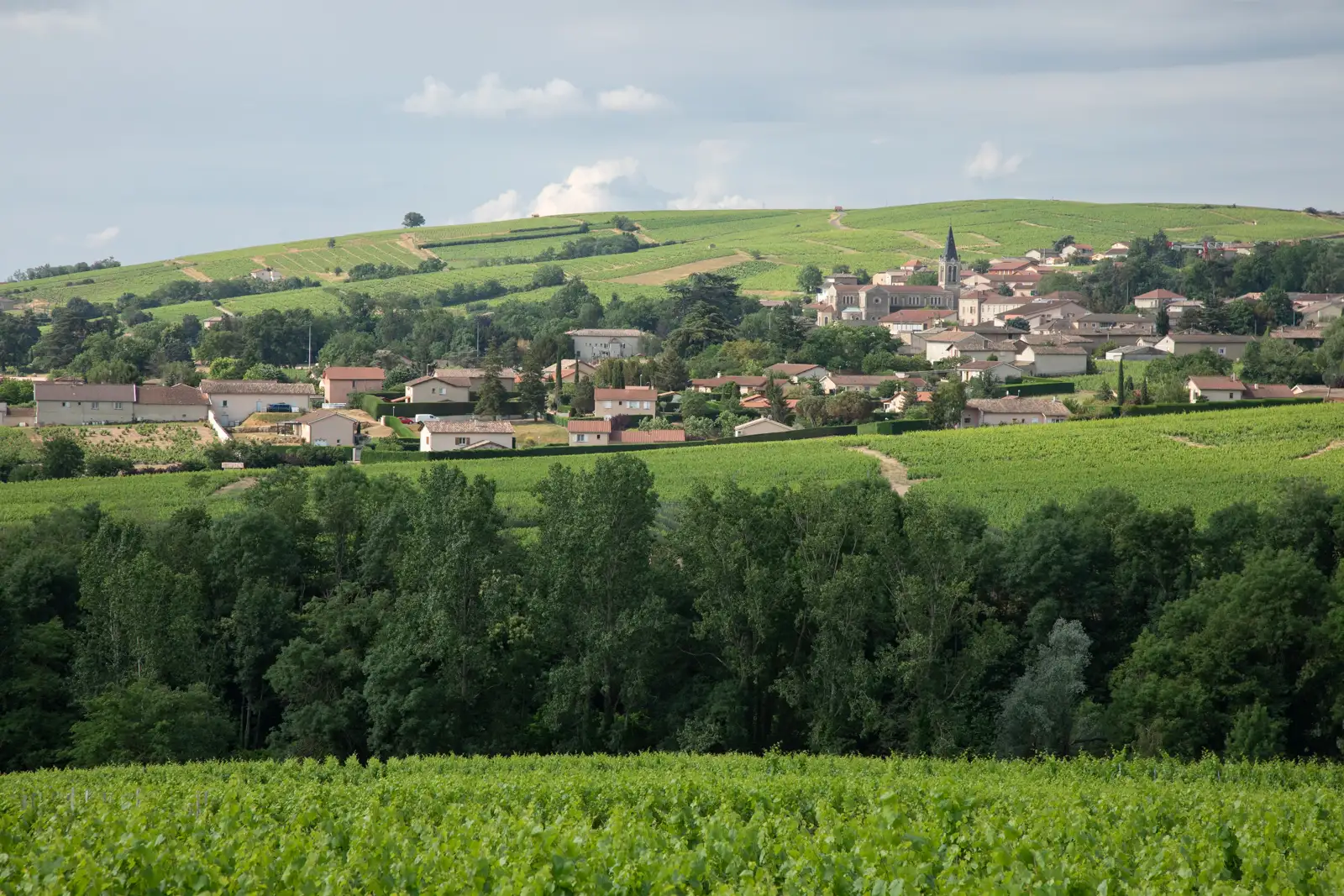
A Soil Story That Actually Translates in the Glass
Burgaud and I were clacking rocks together, seeing how durable they were. (Laugh all you want: this is how wine writers and winemakers bond!). Just over Burgaud’s shoulder was a large cross commemorating the 1906 vintage. All around us were incredible views of Beaujolais’ iconic landscape: Fleurie’s La Madone to the north, Régnié’s dual-spired church in the middle distance, and the Côte de Brouilly — a rounded mountain with a similar origin story as the Côte du Py — way to the south.
Nearly all of the Beaujolais Cru can be accounted for from the Côte du Py’s flat-topped summit. But at that moment, I was too busy marveling at the extraordinary, Aegean-blue wedge of schist in my hand. Burgaud noted the rusty backdrop beneath the blue, the product of iron-oxide, which is in abundance under the Côte du Py, and which Burgaud believes makes the vines more resilient against maladies. The rock may as well have been a Magic Eye poster to me — I was lost in the colors, trying to see where the blue ended and the rustiness began. It occurred to me that it was like teasing apart the savory from the fruity in a glass of Côte du Py. In other words, mission impossible.
“We don’t find these stones in other places in Morgon — only on the Côte du Py. It gives the wine a very different style, with a lot of tannin, and a wine that is more rich.”
Jean-Marc Burgaud
Winemaker
As he broke two stones against each other, showing how crumbly and friable the rotten rock is for his vines’ roots, Burgaud told me the geologic origin story. How the very forces that formed the nearby mountains also created gaps underground that filled with lava. Over time, these chambers cooled and compressed into granite, only to be exposed at the surface by erosion or — as is the case with the Côte du Py — upward thrusting from other geologic forces beneath. Overlaying much of this granite is a blue schist, a metamorphic rock that came into being through intense heat and pressure. Blue schist takes its color from a unique mineral composition that makes it rather rare geologically.
“We don’t find these stones in other places in Morgon,” Burgaud told me. “Only on the Côte du Py. It gives the wine a very different style, with a lot of tannin, and a wine that is more rich.”
Because the blue-stone granite and schist are so nutrient poor and friable — even more so than the pink granite found elsewhere in Morgon and across most of the village’s equally famous neighbor, Fleurie — the vines must explore further underground to find their requirements. There is no room for laziness and loafing, and all that effort yields fruit of a very different nature: more concentrated, more energetic, more tannic, more flavorful. It is as though the vines know that in this environment they need to work even harder to entice seed-dispersers to their fruit.
As far as humans are concerned, the seduction works: Côte du Py fruit tastes differently.
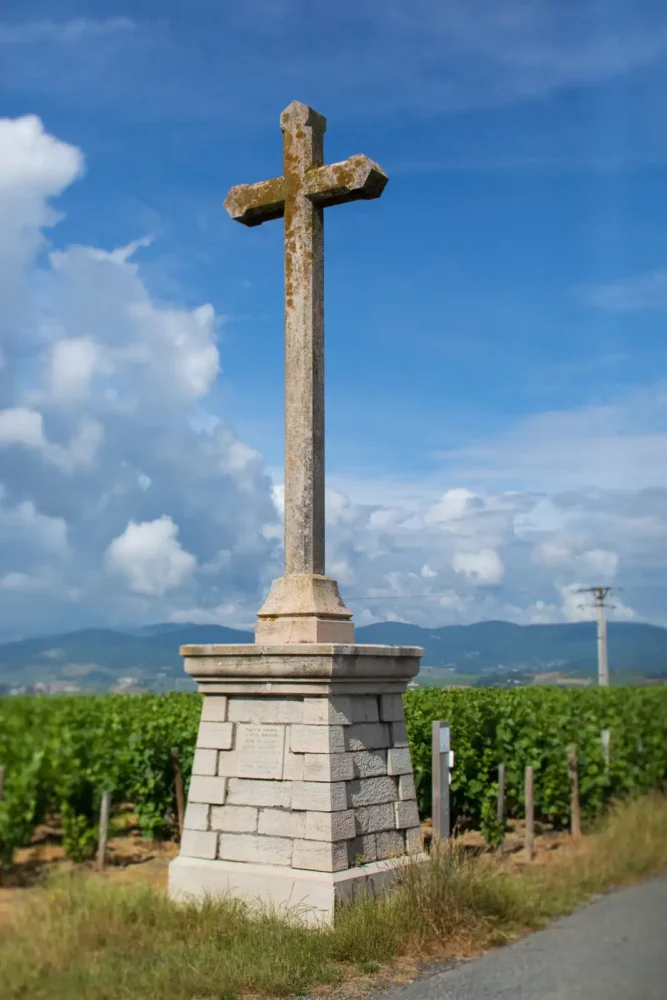
But of course, other factors contribute. The Côte du Py possesses a treasury of old vines, which are naturally more inclined to lower yields and higher quality. On top of that, the hill receives a great deal of sun from all angles, especially the lieux-dits on top. And like Moulin-à-Vent — the only other Beaujolais Cru that can compare to the Côte du Py in terms of richness, structure and flavor — the hill is blasted by the Saône Valley’s winds, which keep clusters dry and allow for further concentration of flavors.
Standing, our rock-smashing complete, Burgaud pointed out a few other prized climat within Morgon: Grands Cras, looking unremarkable and flat to our south; Les Charmes, nestled against a watercourse born from the mountains; and Corcelette, whose pink granite was glinting through the emerald sea of vines draping its slope.
To fully appreciate the Côte dy Py’s eccentricity — and furthermore, the breadth of Morgon’s profile in the glass — it helps to taste these other three climat as well.
Is Morgon the Taste of Côte du Py? Or Is Côte du Py the Taste of Morgon?
So much of Morgon’s reputation is now bound-up in the terroir of the Côte du Py. Because of that, several producers separately vinify not only the Côte du Py, but the village’s other climats. Others — like M & C Lapierre, whom we will meet in a moment — opt for a blending-of-plots approach.
Jean-Marc Burgaud falls into the former category, and his collection of wines represents a superb opportunity to appreciate the true diversity of Morgon’s terroir. (See my companion tasting report for details).
Over a thrilling one-hour tasting in his cellar, I encountered the tea-and-spice elegance of Les Charmes’ deep granite soils, the shape-shifting yet playful power of the Grands Cras’ mixture of clay and limestone, and the high-toned elegance of Corcelette’s pebbly and shallow granitic soil. Clearly there was more to Morgon than I had assumed.
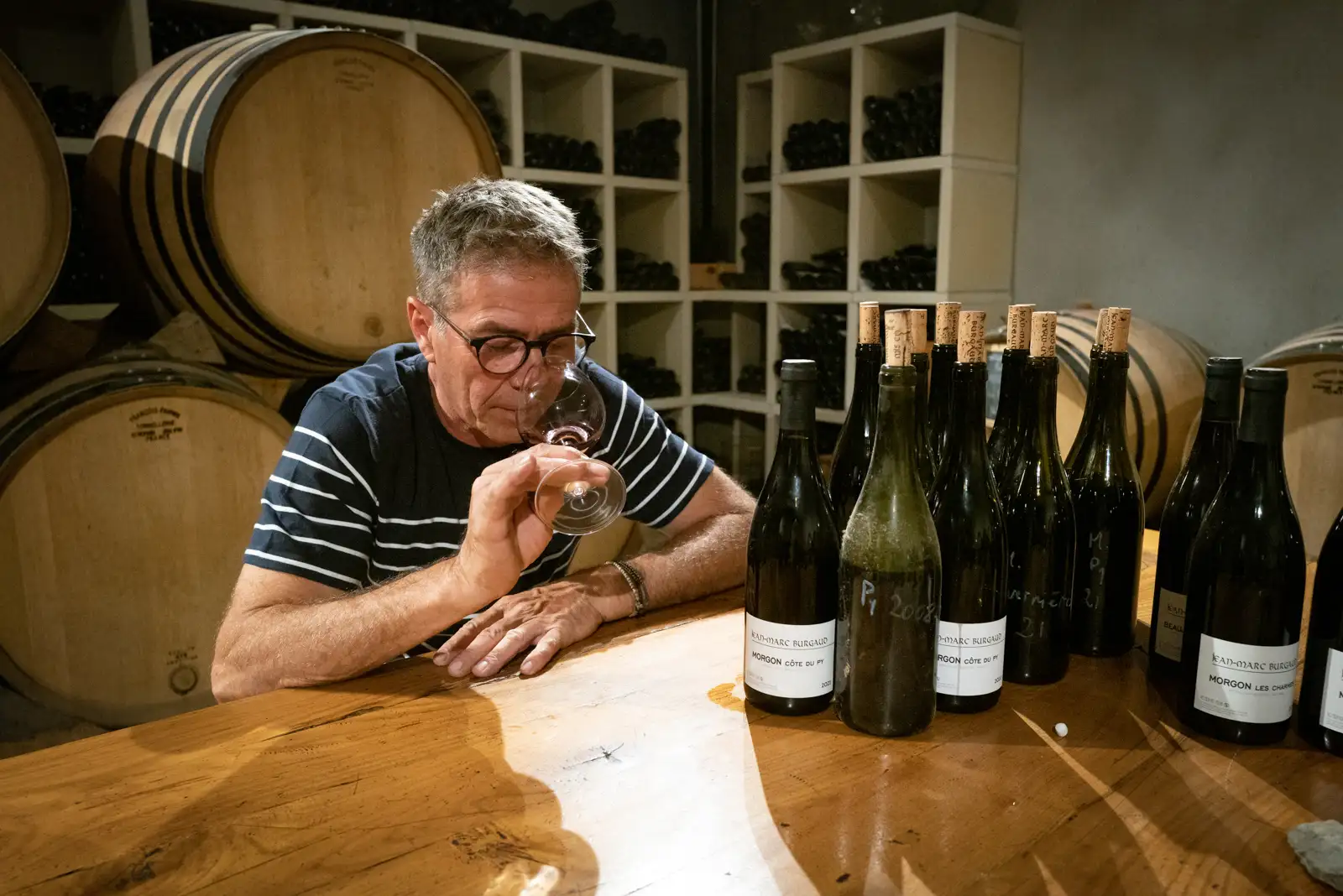
At last, our tasting arrived at the 2022 Côte du Py, and the transition was extreme — like walking from a tea room to a smokehouse. The Côte du Py’s savory aromatics are its signature and the density of the wine feels more substantial too, but that doesn’t sufficiently describe the Côte du Py’s personality.
As the wine opened and evolved, it showed an unpredictable side that is the hallmark of many Côte du Py wines. It might sprint across the palate, or skip joyfully. It might sing an operatic soprano note or shred a guitar solo. It just depends on when you catch it in its evolution.
Yet a lot of what I had just describe is the crutch used by wine educators on Morgon: that it is among the Cru’s most structured, bold and intense wines. But as Burgaud’s brilliant wines from Corcellette, Grands Cras, and especially Les Charmes showed, Morgon is far more diverse and elegant too. The distilled narrative is really a description of the Côte du Py.
Could it be that Morgon itself is a microcosm of all the Beaujolais Cru?
Lapierre: To Blend Or Not to Blend
“There are different strategies when you make wine,” said Mathieu Lapierre, a Morgon vigneron who co-manages the domaine M & C Lapierre with his sister, Camille. We were at a trade tasting in San Francisco, a celebration for his importer’s 50th anniversary, and I was asking him about his belief in blending multiple plots — including the Côte du Py — for a singular village cuvée.
“It has become political,” he said of the world-wide craze for hyper-specific, site-focused wines. “Which wine do you sell or which wine do you want to drink?”
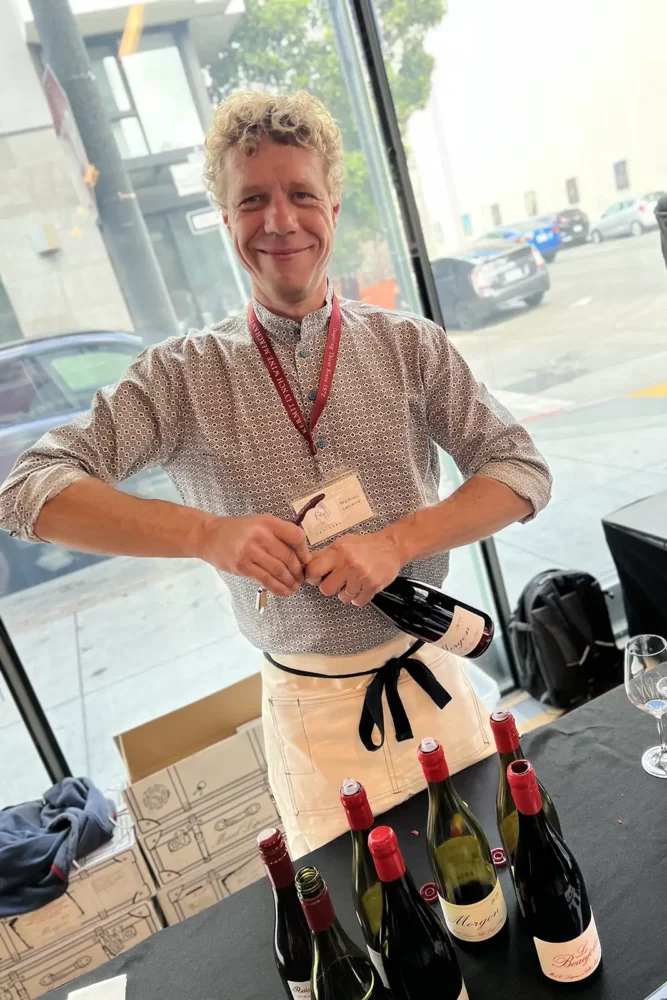
This trend is clearly a potent market force for the Beaujolais Cru as well, but in his eyes, “the wine deserves a real gastronomic voracity” that can only come from blending the plots. When I clarified if he saw the Côte du Py as merely an ingredient in an overall vision of his wine, he simply said: “Yes. It is part of Morgon.”
It was a statement that spoke volumes of the Lapierre family’s approach. Beaujolais is not Bourgogne, where tiny Grand Cru vineyards constitute their own appellation. In Lapierre’s eyes, their wines are in service to Morgon.
“If you only do Côte du Py, you show customers the more bourgeois, aristocratic part of the Cru, which for me is not really the idea of Beaujolais. We make wine for the people since the beginning … Maybe in the end, it is better to make a simple cuvée.”
Mathieu Lapierre
Winemaker
M & C Lapierre
“If you only do Côte du Py, you show customers the more bourgeois, aristocratic part of the Cru,” Lapierre told me. “Which for me is not really the idea of Beaujolais. We make wine for the people since the beginning … Maybe in the end, it is better to make a simple cuvée.”
Yet, Lapierre was not necessarily critical of his climat-by-climat focused peers. “Doing a Côte du Py, if you have the luck and can do some, why not?” he said. In fact, Mathieu and Camille do just that in extraordinary vintages from a small plot of southwest-exposed, 50- to 75-year-old Côte du Py vines called “Cuvée Camille.”
However, he said “it is not that easy [to acquire vines in the Côte du Py] and I do prefer to have that impact [of the Côte du Py] on my Morgon.”
And this isn’t just one winery’s philosophy, because M & C Lapierre isn’t just another winery. Sanctified by natural wine enthusiasts, their words have enormous gravity. In fact, their stark, black-and-white label — which simply declares “Morgon” in cursive font — is among the most recognizable labels in French wine. They are the ambassadors of Morgon for both Beaujolais nerds and those who have spent little time studying the area.
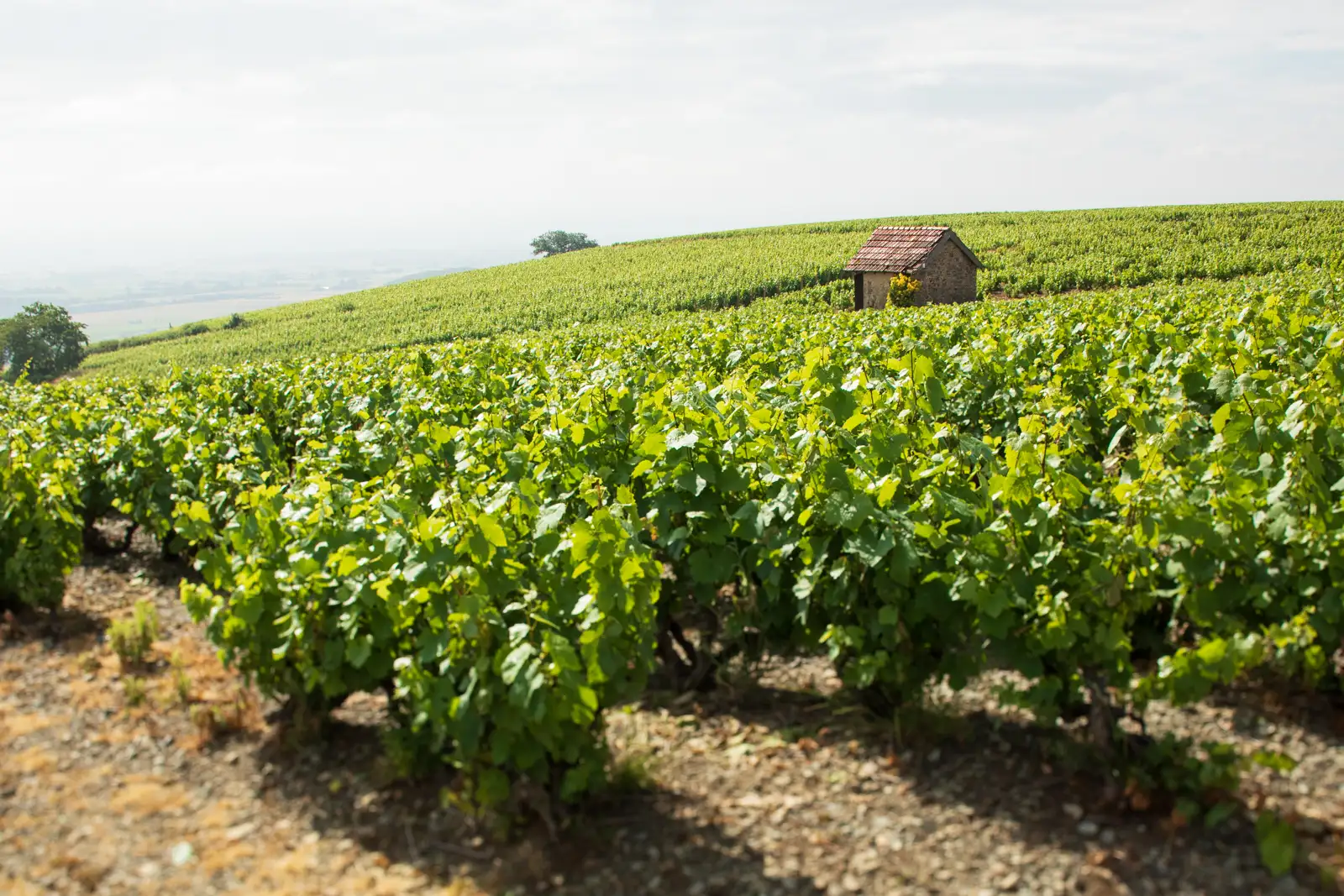
Premier Cru Côte du Py?
Yet with so many permutations of Morgon and the Côte du Py, one cannot help but ask, “where does this leave us?” especially in light of recent news that the producers of Fleurie have sought Premier Cru status from the INAO for that Cru’s top seven climats: La Madone, Grille Midi, La Chapelle des Bois, Poncié, Les Moriers, Les Garants and La Roilette.
The process could take several years, as is the norm with France’s multi-layered bureaucracy, but the genie is out of the lamp: Beaujolais’ hierarchy is headed for yet another wrinkle of classification.
But as Jon Bonné, author of The New French Wine points out: “This was a huge symbolic step for Beaujolais — to seek a hierarchy in a place that had largely defined its history on having none.” He goes on to say that the existing appellations have been somewhat hierarchical, but the broader point — that Beaujolais’ “wine for the people” modus operandi, as well as its common practice of blending plots, seems antithetical to such status-seeking — should not be ignored.
What About Côte de Brouilly?
Larger, steeper and crowned by forest, the Côte de Brouilly is often compared to the Côte du Py because select parcels have the same geology of blue stones. It stands alone as a singular AOC (Beaujolais Cru) and while you will find a handful of artisanal winemakers working on the Côte de Brouilly, it has had a very different winemaking culture over time thanks to négociants and commercialized houses.
As one Cru goes, so shall the others, right? Not so fast. The community of winemakers in Morgon has long had a bit of punk rock to their soul, and from what Jean-Marc Burgaud told me back in June, many of them are not convinced that they should follow suit. Burgaud himself seemed to be sitting on the fence regarding the issue. As much as anyone, he knows the climat of Morgon — and especially the Côte du Pu — do not need an official stamp to be lauded. But he is also pragmatic.
“[Let’s say] I am a private customer. I don’t know wines, but I love wines,” he theorized. “If I see a label with Fleurie Premier Cru, and I see a label with Morgon Les Charmes or Morgon Côte du Py, I would say ‘Fleurie Premier Cru’ is better than Morgon Côte du Py just because it is Premier Cru.” He paused and took stock of the situation. “So, not addressing this could be dangerous. Or confusing for the consumer.”
In the American market — which at 42% is far and away the largest export market for Beaujolais — consumers have finally ironed-out the differences between Beaujolais Nouveau, Beaujolais, Beaujolais-Village and Cru Beaujolais. At least for the most part. (Just last night, I had to convince a friend that the Morgon we were ordering was not the Nouveau he only knows). Maintaining the existing appellation without Premier Cru classification in Morgon would at least keep things clear for the consumers who now get it and are firmly on-board the Beaujolais train. But can they afford to allow Fleurie to claim such a singular spotlight?
Time will tell. What is for certain is that the Côte du Py is Morgon’s grandest site, and perhaps the grandest site in all of Beaujolais. Slapping “Premier Cru” on the bottle — or on the bottles from a few single-vineyard sites in Fleurie — won’t change that.
Support My Work. Subscribe.
My travels through Beaujolais were almost entirely self-funded (airfare was covered from a separate press trip), as was my attendance at the Kermit Lynch portfolio tasting in San Francisco. These explorations are funded entirely by subscribers of Opening a Bottle.
Individuals can subscriber for $49/year or $5 month, which allows you to unlock the paywall, read all of our winery profiles and tasting reports, and attend our live online wine classes. The wine industry can enjoy group accounts with significant perks for only $139/year — which I am told, given those perks, is vastly underpriced. So take advantage of it! And thank you.
